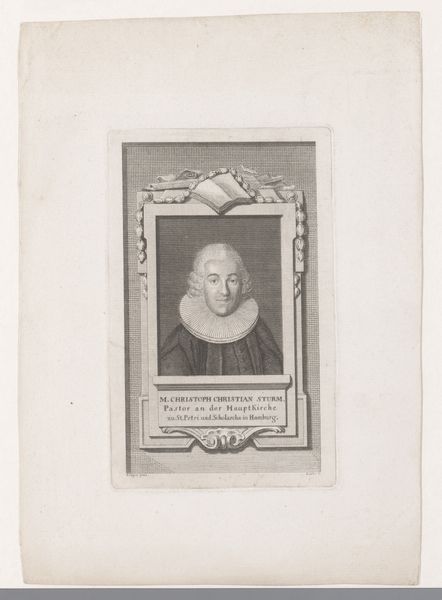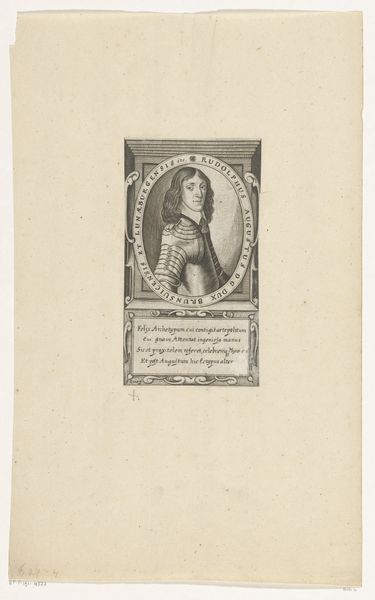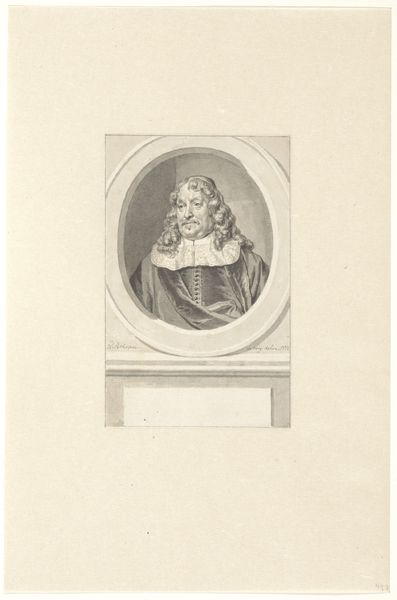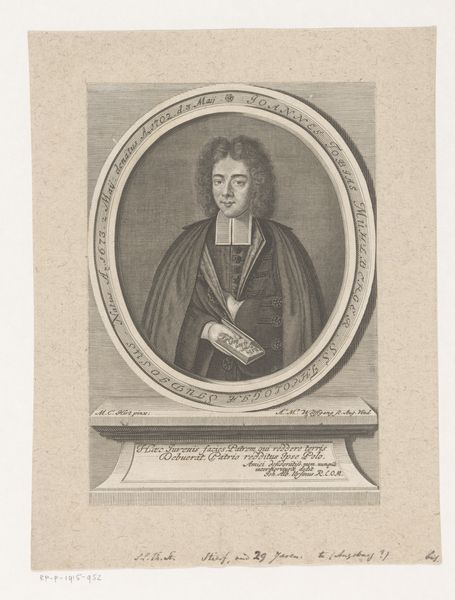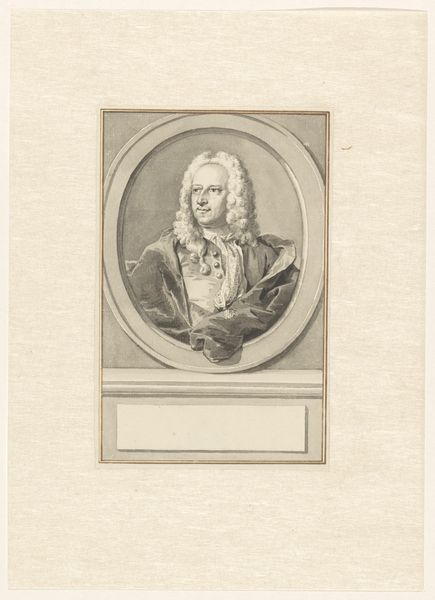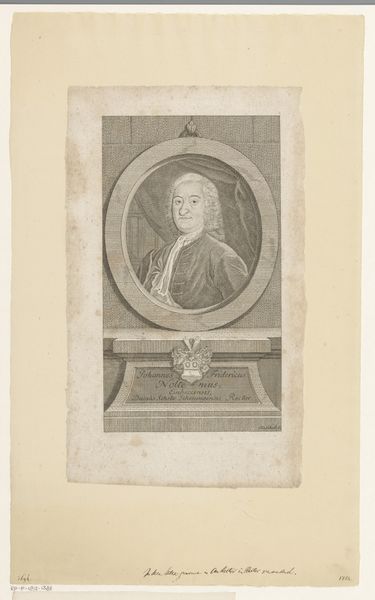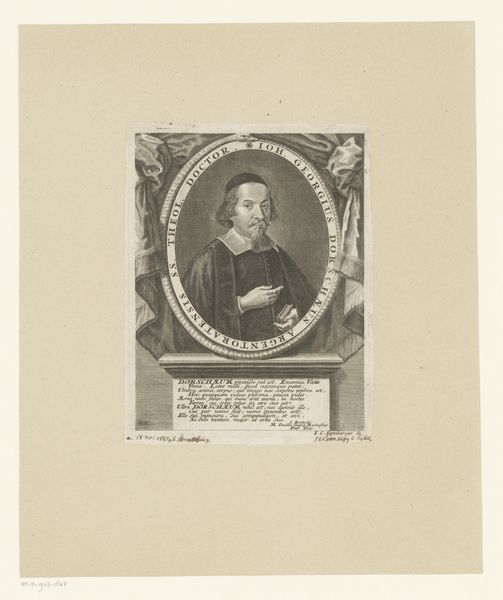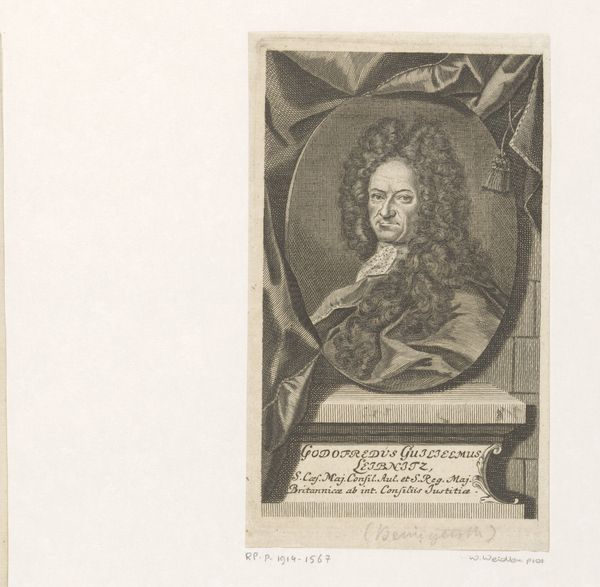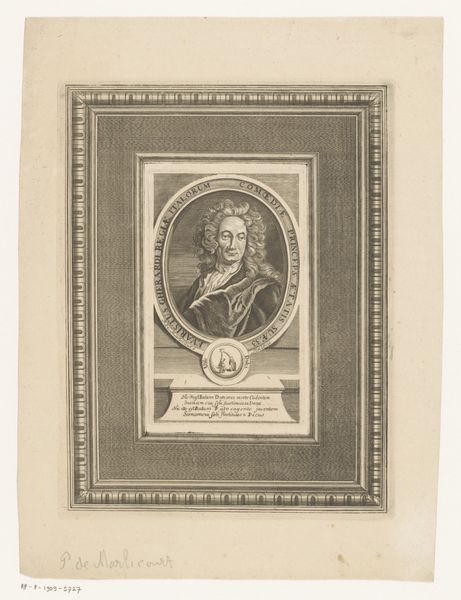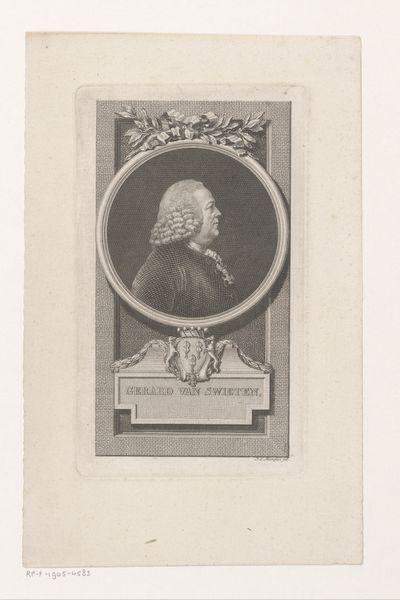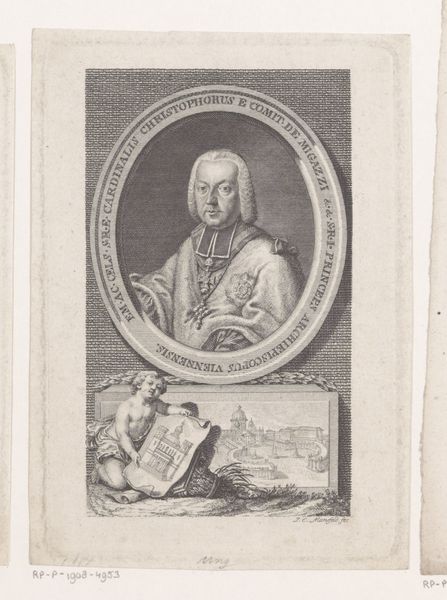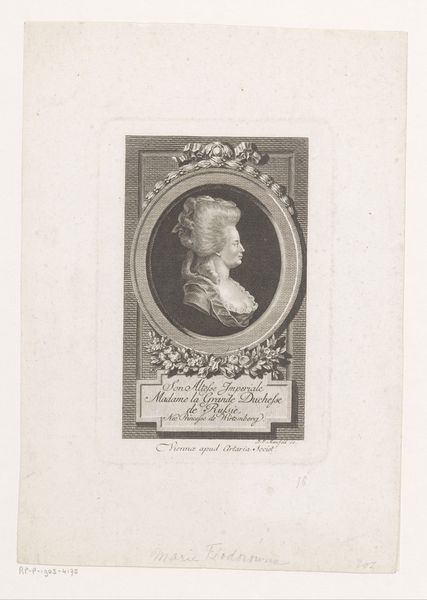
engraving
#
baroque
#
old engraving style
#
traditional style
#
history-painting
#
engraving
Dimensions: height 110 mm, width 89 mm, height 187 mm, width 160 mm
Copyright: Rijks Museum: Open Domain
Curator: Let's dive right in! Editor: Here we have "Portrait of Salomon Glass," an engraving made in 1673 by Melchior Hafner II. The portrait feels very proper, almost…severe? It's the tight framing, the dark clothing, perhaps? What do you make of it? Curator: Ah, "severe," that's a keen observation! To me, the severity speaks to the Baroque aesthetic, don’t you think? Look at the ornate frame contrasting so sharply with the sitter's somber dress. It whispers tales of status and the complex tension between religious austerity and worldly achievement. What’s striking is that the artist created such a richly ornamented border. I wonder why such a formal portrayal, instead of one showing emotion, or less rigid lines. Editor: That's true, that juxtaposition really stands out! Is that common for Baroque portraits, this sort of, push and pull? Curator: In some ways, yes. The Baroque loved dramatic contrasts and expressions, but religious and academic figures, like Salomon Glass, were often rendered with an eye toward dignified reserve, emphasizing their intellect and piety. It also draws you in closer! So tell me, is the artist actually saying something about the nature of the sitter here? Editor: Maybe? Perhaps hinting that even someone of faith can also be part of this ornate lifestyle. I had only noticed the surface level depiction. Curator: Precisely. Consider it less a literal depiction and more of an insightful exploration of the layers of identity and context. The real trick, it seems, is getting to that "aha!" moment of realization that changes our viewpoint. Editor: Wow, that changes how I see it. Now I'm left wondering, what else am I missing? Curator: And there lies the magic of art, leaving us perpetually curious.
Comments
No comments
Be the first to comment and join the conversation on the ultimate creative platform.
